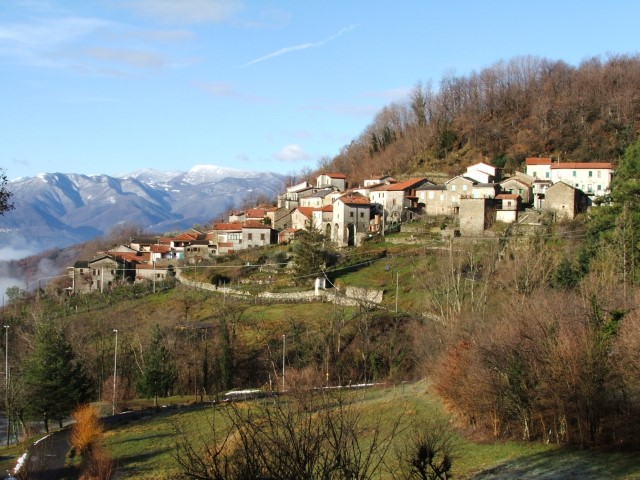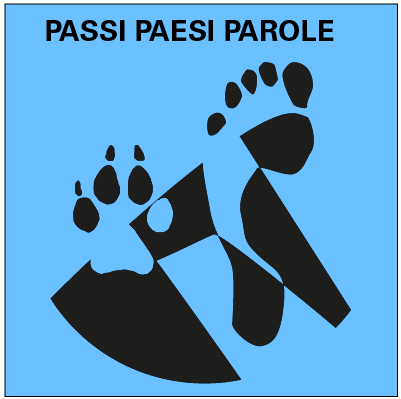
Lusignana is a small village to the left side of the upper Caprio valley. Behind it are the South Western slopes of the Apennines dominated by Monte Marmagna in the Monte Orsaro range. At 535m above sea level it is one of the highest communities on the Tuscan side of the Magra valley.
The village consists of two long-established hamlets located about half a mile apart – Vignolo and its older twin, Posponte. Each is served by buildings modest both in size and architectural design as befits a traditional rural farming community. For an historical overview of the area click here.
During the winter months the population of Vignolo (the larger hamlet) is no more than 15, but during the summer months this swells to over 300.
Links to the Lusignan family
Lusignana is named after the Lusignan family who were originally based near Poitiers in modern France. Legend has it that during the 10th century they were awarded the fief of Lusignana for services rendered in fighting muslim forces originating from North Africa. Although ultimately dying out in the late 15th century, the dynasty was of pan-European importance and were one-time kings of Cyprus, Jerusalem and Armenia. Documentation on the history of Lusignana is available as follows:
- The legendary creation of Château de Lusignan by the fairy Queen Mélusine
- The Lusignan family in the 11th & 12th centuries
- The history (and eventual demise) of the Château de Lusignan
- Detailed description of the Lusignan dynasty
- Genetic legacy of the Lusignans – names, blond hair & dialect
- The Cisalpine Repubic & the Napoleonic Kingdom of Italy (1797-1815)
Malaspina influence
The hamlet of Vignolo (previously known as Vignòla or Vineola) was once part of Pontremoli but its history prior to 1495 is largely unknown since in that year the town was sacked by the French under Charles VIII (1470-1498) and all the private and public records in the archives were destroyed.
A deed cited by Pietro Ferrari (Studi di storia Lunigianese 1923 p119 – www.liberliber.it), records that in 1357 Marquis Riccardino Malaspina of Filattiera (born before c1332-c1392) ruled the fief of Posponte, and that Marquis Morello Malaspina of Mulazzo (before c 1303-1365) ruled the fief of Rocca Sigillina noted as incorporating both Vignolo and the nearby hamlet of Cavallana. The deed also records that the two fiefs enjoyed shared rights over Monte Castello.
According to Repetti (Geographic-Historical Dictionary of Tuscany, Florence 1833-1845), Posponte was a one-time fief of Marquis Spinetta Malaspina di Fosdinovo (1340-1352) but broke away on 7 March 1477, allying itself to the Florentine Republic which granted it very advantageous terms. It reappears as part of the Malaspinian fief of Filattiera in 1549 under Marquis Bernabò (died 1579), son of Manfredi (died 1549-59) who, on 17 March of that year, sold the fief to Cosimo I (1519-1574), then Duke of Florence, whilst retaining his baronial rights, which were later renounced in favour of Grand Duke Francesco II (1610-1670).
The parish of Lusignana (which originally covered only Posponte) is dedicated to Saints Vincenzo and Anastasio and belongs to the Diocese of Pontremoli. Built on the site of a chapel, the current parish church was dedicated on 2nd July 1640. It had 171 inhabitants in 1745 and 109 in 1833.
As regards the hamlet of Vignolo the population was 171 in 1745, dropping to 148 by 1833. It was not until 1865, when Rocca Sigillina, Cavallana and Gigliana were detached from the municipality of Bagnone and aggregated to that of Filattiera, that Vignolo and Posponte were united under common administration as the village of Lusignana (also once known as Nasognana).
